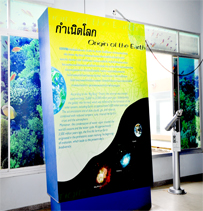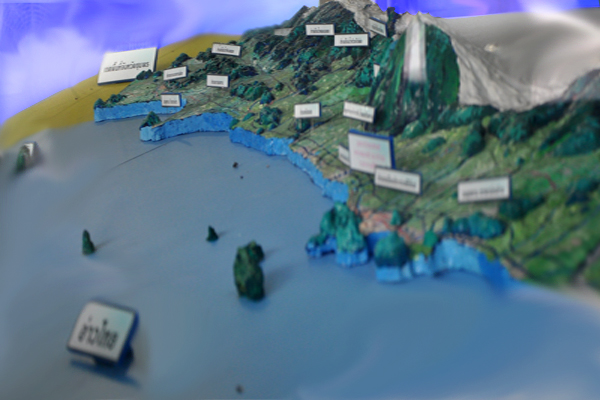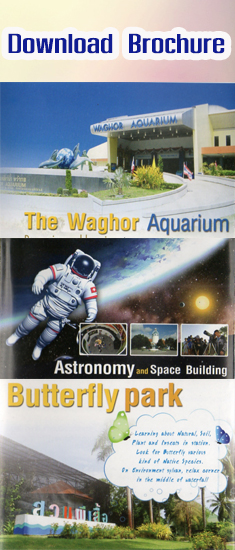• Background • The Wondrous Blue World • Colours of the Sea • Opening the Undersea World • Examples of aquatic creatures • Assessment
1. Birth of the Earth This area presents an exhibition of the birth of the earth and living creatures as well as the evolution of lives on earth. There is also an exhibition of the ecological system of Prachuab Khiri Khan Province and Waghor Bay. |
 |
2. Birth of Life: there are 3 theories about the birth of life on earth:
3. Evolution of Life on Earth Life on earth has evolved from life in the past. This life consists of plants, animals and human beings, each of which has its own way of evolution. 4. Model of Prachuab Khiri Khan Province The model of Prachuab Khiri Khan Province features the sites of natural resources and the ecological system of this southernmost province of the Central Region. It covers an area of 6,357.62 square kilometres and the distinctive element of its topography is that its widest part is only 60 kilometres, its narrowest 12 kilometres and its coastal area 224 kilometres in length. The number of its population is 492,617 (Department of Local Administration, Ministry of the Interior, 2004) and its administration is divided into 7 districts and 1 semi-district. The province features a diversity of wilderness in the ecological system—tropical rain forest, dry, dense forest, quagmires and mangroves and the ecological system of the coast is made up of sandy beaches, mud beaches and coral reefs. Prachuab Khiri Khan Province is strategically important because it is located on the Thai-Burmese Border, close to the Chedi Sam Ong Checkpoint, which was, in the past, an important route for Thai and Burmese troops. The province is important in history and astronomy, particularly Waghor Village, where King Mongkut came to prove the accuracy of his calculation of a solar eclipse. Later, this village was turned into the site of a science park entitled, the "King Mongkut Science Park at Waghor, Prachuab Khiri Khan Province," which is next to the sea and covers an area of approximately 500 rai. |
 |


